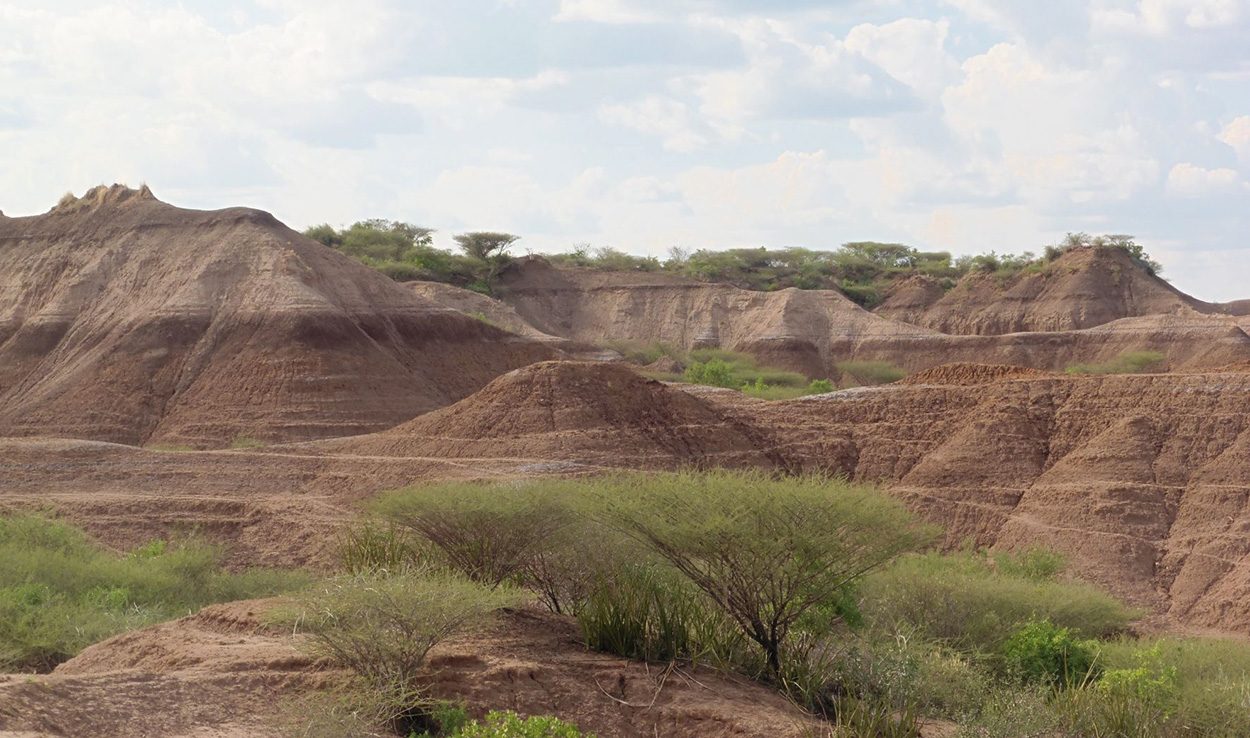The cradle of our species was in Africa, but it is unclear when the first representative of anatomically modern humans, Homo sapiens, appeared there. Now the new date of the oldest Homo sapiens fossil from East Africa provides new clues. Thus the fossil found in the Omo-Kepish Formation in Ethiopia is already at least 230,000 years old – and therefore about 35,000 years older than previously assumed. Unlike the ancient fossils of Homo sapiens from Morocco, Homo sapiens from Omo also do not have archaic traits. So he could have been one of the first truly modern representatives of our species.
Like many early human species, Homo sapiens evolved in Africa – and that seems pretty obvious. However, where the first representatives of our species originated is not so clear due to a lack of fossils – to date only eight sites of early Homo sapiens are known, many of them in East Africa. So this region that was once the rift valley of East Africa has long been considered the cradle of our species, and judging by the age of the fossils, the origin of Homo sapiens dates back nearly 200,000 years. In 2017, scientists in Morocco discovered fragments of human skulls that were already 300,000 years old and showed clear characteristics of Homo sapiens, even if some of the characteristics still seemed somewhat ancient. These findings, combined with complementary genetic studies, suggest that the roots of our species go way back — and may not be just in East Africa.
Volcanic eruptions as a dating aid
For more clarity, Céline Vidal of the University of Cambridge and her colleagues took another look at one of the oldest and most famous human fossils from East Africa. Fossil Omo 1 consists of parts of the skull of Homo sapiens that were found in the 1960s in the Omo Kibish Formation in southwestern Ethiopia. The area was characterized by frequent volcanic activity, which is why there are several layers of volcanic deposits and ash in the ground. “The fossils were discovered under a thick layer of volcanic ash, but no one was able to accurately date them using traditional radiometric methods because the ash was very fine-grained,” Vidal explains. Radiocarbon dating was also out of the question. However, from dating some of the larger pieces and similarities with volcanic projectiles, it was concluded at the time that the skull of Omo 1 must have been around 197,000 years old.
However, Vidal and her team once again closely examined the fossil site and took fresh samples of ash above the layer of the skull. In parallel, they also took samples from two volcanoes of the Ethiopian rift system, Shala and Korbeti, which are known to have erupted several times between 250,000 and 170,000 years ago. To determine the date of the ash from Omo Kibish, scientists compared the geochemical features of this ash layer with those of various ancient eruption remains. “Each eruption has its own fingerprint, which was formed by the evolution of magma and its path under the surface,” Vidal explains. By identifying and comparing the chemical composition of the minerals in these volcanic materials, the team was able for the first time to more accurately age the ash layer on Omo Kepish.
32,000 years earlier than expected
The analyzes showed that the ash layer geochemically corresponds better to the eruption of the Shala volcano, about 400 km away. “But at first we didn’t know the exact age of this volcanic eruption,” Vidal explains. So they sent a sample of minerals from this volcanic material to colleagues who did argon dating of the crystals. “When I received the results and discovered that the Homo sapiens fossil must be older than I previously thought, I was thrilled!” says Vidal. Re-dating revealed that Omo 1 is not 197,000 years old as assumed, but at least 230,000 years old. This means that the first appearance of Homo sapiens in East Africa has also passed into the past. In addition, co-author Aurélien Mounier of the Musée de l’ explains, unlike other fossils that have been devoted to the early stages of Homo sapiens evolution, Omo 1 undoubtedly has modern features, including a large domed skull and a distinctive chin. Ohm in Paris. “The new dating makes Omo 1 at the same time the oldest visibly anatomically modern human in Africa.”
As scientists explain, the very early evolution of Homo sapiens in East Africa cannot be ruled out. “We can only determine the history of human evolution from the fossils we have,” Vidal asserts. “So it is almost impossible to say: this is the final age of our species.” New discoveries and findings can change the previous schedule at any time.
Cowell: Celine Vidal (University of Cambridge, UK) et al, Nature, doi: 10.1038/s41586-021-04275-8

“Alcohol buff. Troublemaker. Introvert. Student. Social media lover. Web ninja. Bacon fan. Reader.”






More Stories
“Time seems to cure long Covid.”
Science: The use of artificial intelligence is changing the way hospitals operate
Simple recipe: sweet cream cheese slices from the tray